 W
WThe coat of arms of Antioquia, in its current form, dates back to August 23, 1812 when it was officially adopted by the Chamber of the Senate of Antioquia by means of Decree 21 of 1812, replacing the Great State Seal of Antioquia that was sanctioned by State President José María Montoya Duque on September 2, 1811. Following the incorporation of Antioquia to the United Provinces of New Granada and subsequently to the Granadine Confederation and the United States of Colombia, the Sovereign State of Antioquia adopted the coat of arms of Colombia as its state arms. Antioquia reverted to the original coat of arms in 1912 for the occasion of the centenary of the independence of Antioquia and it has been in official use ever since.
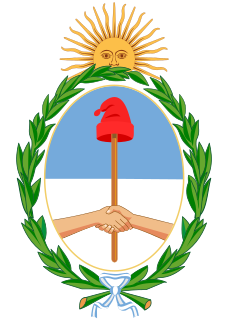 W
WThe coat of arms of the Argentine Republic or Argentine shield was established in its current form in 1944, but has its origins in the seal of the General Constituent Assembly of 1813. It is supposed that it was chosen quickly because of the existence of a decree signed on February 22 sealed with the symbol. The first mention of it in a public document dates to March 12 of that same year, in which it is stated that the seal had to be used by the executive power, that is, the second triumvirate. On April 13 the National Assembly coined the new silver and gold coins, each with the seal of the assembly on the reverse, and on April 27 the coat of arms became a national emblem. Although the coat of arms is not currently shown on flags, the Buenos Aires-born military leader Manuel Belgrano ordered to paint it over the flag he gave to the city of San Salvador de Jujuy, and during the Argentine War of Independence most flags had the coat of arms.
 W
WCoat of arms of Buenos Aires Province was declared official on the 19th of October 1935, by Law 4351. It is similar to the arms of Argentina and has its origins in the seal of the General Constituent Assembly of 1813.
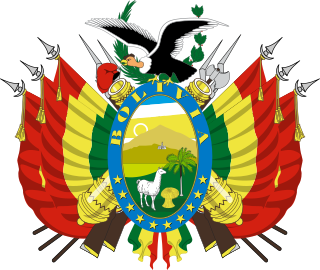 W
WThe coat of arms of Bolivia has a central cartouche surrounded by Bolivian flags, cannons, laurel branches, and has an Andean condor on top.
 W
WThe coat of arms of Colombia contains a shield with numerous symbols. Perched on top of the shield is an Andean condor holding an olive crown and the condor symbolizing freedom. The national motto, Libertad y Orden, is on a scroll in between the bird and the shield in black font over golden background. The condor is depicted as displayed and looking to the right.
 W
WThe Cuban coat of arms is the official heraldic symbol of Cuba. It consists of a shield, in front of a fasces crowned by the Phrygian cap, all supported by an oak branch on one side and a laurel wreath on the other. The coat of arms was created by Miguel Teurbe Tolón and was adopted on April 24, 1906.
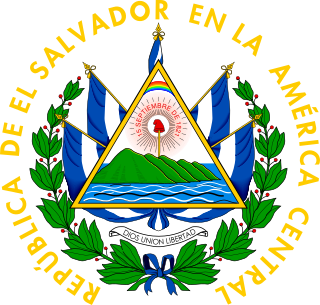 W
WThe coat of arms of El Salvador has been in use in its current form since 15 September 1912.
 W
WThe coat of arms of Haiti is the national coat of arms of the Republic of Haiti. It was originally introduced in 1807, and has appeared in its current form since 1986.
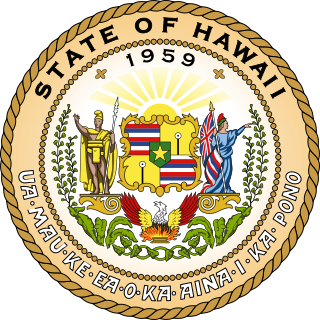 W
WThe Great Seal of the State of Hawaii was designated officially by Act 272 of the 1959 Territorial Legislature and is based on the territorial seal. Modifications to the territorial seal included the use of the words "State of Hawaii" at the top and "1959" within the circle. Provisions for a seal for the state of Hawaii were enacted by the Territorial Legislature and approved by Governor William F. Quinn on June 8, 1959. The passage of the Admission Act in 1959, admitted Hawaii as the 50th State of the United States of America on August 21, 1959.
 W
WThe seal of the Territory of Idaho was adopted in 1863 and redrawn several times before statehood in 1890. The state Great Seal was designed by Emma Edwards Green, the only woman to design a state seal.
 W
WThe Great Seal of the State of Iowa was created in 1847 and depicts a citizen soldier standing in a wheat field surrounded by symbols including farming, mining, and transportation with the Mississippi River in the background. An eagle overhead bears the state motto.
 W
WThe coat of arms of the State of New Jersey includes:A shield with three plows, representative of New Jersey's agricultural tradition. A forward-facing helmet. A horse's head as the crest of the helmet. The female figures Liberty and Ceres, representative of the state's motto. Liberty is holding a staff supporting a stylized Phrygian cap; Ceres is holding an overflowing cornucopia. The streamer at the foot of the emblem contains the State Motto of New Jersey, "Liberty and Prosperity", and the year of statehood, 1776.
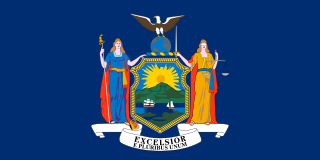 W
WThe coat of arms of the state of New York was formally adopted in 1778, and appears as a component of the state's flag and seal.
 W
WThe state seal of New York features the state arms surrounded by the words "The Great Seal of the State of New York". A banner below shows the New York State motto Excelsior, Latin for "Ever Upward", and the secondary motto E Pluribus Unum, Latin for "Out of Many, One"—adopted in 2020.
 W
WThe Nicaraguan coat of arms was first adopted on August 21, 1823 as the coat of arms of Central America, but underwent several changes during the course of history, until the last version was introduced in 1971.
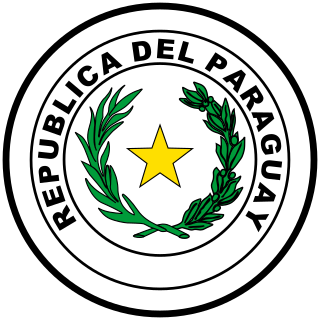 W
WThe national coat of arms or national seal of Paraguay or has the following construction:
 W
WThe Coat of arms of Tolima is the coat of arms of the Colombian Department of Tolima. The emblem was adopted by Law of December 7, 1815 ordained by the United Chambers of the Mariquita Province and sanctioned by José León Armero, the governor and general in command. In 1861 the coat of arms was adopted for the Sovereign State of Tolima by Decree of April 12 of the same year by General Tomas Cipriano de Mosquera and officially established on September 7.
 W
WThe Department of the Army Seal and the Department of the Army Emblem are, respectively, the official seal and emblem of the United States Department of the Army. The "War Office Seal" was created in 1778 and the Emblem was developed out of the seal and approved in 1947.
 W
WThe Great Seal of the State of West Virginia was adopted in September 1863. The obverse center of the seal contains a boulder that has been inscribed June 20, 1863, the date West Virginia became a state. In front of the boulder lie two crossed rifles and a liberty cap as a symbol of the state's fight for liberty. The two men on either side of the boulder represent agriculture and industry. On the left stands a farmer with an ax and plow before a cornstalk. On the other side stands a miner with a pickax, and behind him an anvil and sledge hammer. The outer ring contains the text "State of West Virginia" and the state's motto "Montani Semper Liberi",. The reverse of the seal, also called the lesser seal, is the official seal of the Governor. Its motto reads "Libertas E Fidelitate".